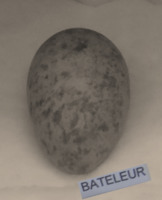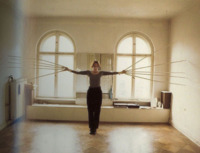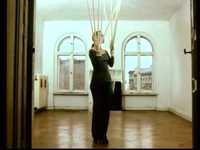Items
Site
The Medicine Chest
keywords is exactly
wall
-

'How Zoology was taught in the past'
The wall text accompanying these charts in the Hunterian museum, Glasgow, reads: "In the late 19th and 20th centuries, before the advent of colour slides that could be projected, the teaching of Zoology depended heavily on the use of wall charts to illustrate lectures. They were hung on a special pulley system at the front of the lecture theatre and, because of their large size, could be clearly seen from the back of the class". -

Kimberley Mine
A detail from the wallpaper used outside the Cape Town Diamond Museum in the V&A Waterfront. -

Ma
The Japanese have a word, ‘ma’, for this interval which gives shape to the whole – this ‘gap’, ‘opening’, ‘space between’ or ‘time between’. Ma is not something that is created by compositional elements, rather it can be understood as the thing that takes place in the imagination of the human who experiences these elements. A room, for example, is called 'ma', as it refers to the space between the walls. Or a rest in music, which indicates a pause between the notes or sounds (Pilgrim 1986: 255). -

Donahue near-miss
An artwork purchased in 2015 from the Michaelis School of Fine Art Graduate Show, created by then student, Tess Metcalf. -

Timekeeper
Installation view of a hole revealing all painting of successive exhibition layers, 20 cm in diameter at the Viennese Secession -

Bataleur egg
Situated in a locked bespoke cabinet in the Niven Library in UCT’s Percy Fitzgerald Institute of African Ornithology, this Bataleur eagle egg is part of a collection of eggs donated by the ornithologist Peter Steyn in 2007. Collected between 1961 and 1977, when Steyn spent time in Zimbabwe, the egg is a link to the iconic stone carved Zimbabwe Birds which once stood proudly on guard atop the walls and monoliths of the ancient city of Great Zimbabwe, believed to be built between the 12th and 15th centuries by ancestors of the Shona. The overall shape of the birds suggests that of a bateleur eagle – a bird of great significance in Shona culture. The bateleur or chapungu is a good omen, the symbol of a protective spirit and a messenger of the gods. -

Holes
A virus attacks a cell by attaching itself to the outer wall. It then uses a specialized protein to digest a small hole in the wall of the cell and inject its nucleic acid molecule into the cell's cytoplasm. -

Intersections
"In recent years, particular interest has been directed at the resulting cross-pollinations and hybridities in the treatment of illness and disease that developed during the colonial and precolonial period from this heterogenous mix of cultures. Karen Flint’s 'Healing Traditions' (2008) and Digby’s 'Diversity and Division in Medicine' (2006) suggest that a complex structure of complementarity existed in which overlapping forms of health care had permeable and shifting boundaries (Digby 2006: 33; Flint 2008:7) illustrated perhaps most succinctly in the particularly porous field of botanical medicine, which almost all cultures utilised in their treatments to some extent" (Liebenberg 2021: x). -

Touching both walls at the same time
As a young sculptor working in the 1960s, Horn suffered severe lung damage from working with fiberglass and polyester, and spent long periods convalescing in hospital. Whilst restricted to her hospital bed, Horn devised a series of wearable sculptures or 'body extensions' which she would later make using cloth, wood, bandages, belts, feathers, and found objects. Her masks and extensions contain, constrain, and/or elongate the bodies of their wearers. -

Touching both walls at the same time
As a young sculptor working in the 1960s, Horn suffered severe lung damage from working with fiberglass and polyester, and spent long periods convalescing in hospital. Whilst restricted to her hospital bed, Horn devised a series of wearable sculptures or 'body extensions' which she would later make using cloth, wood, bandages, belts, feathers, and found objects. Her masks and extensions contain, constrain, and/or elongate the bodies of their wearers.


